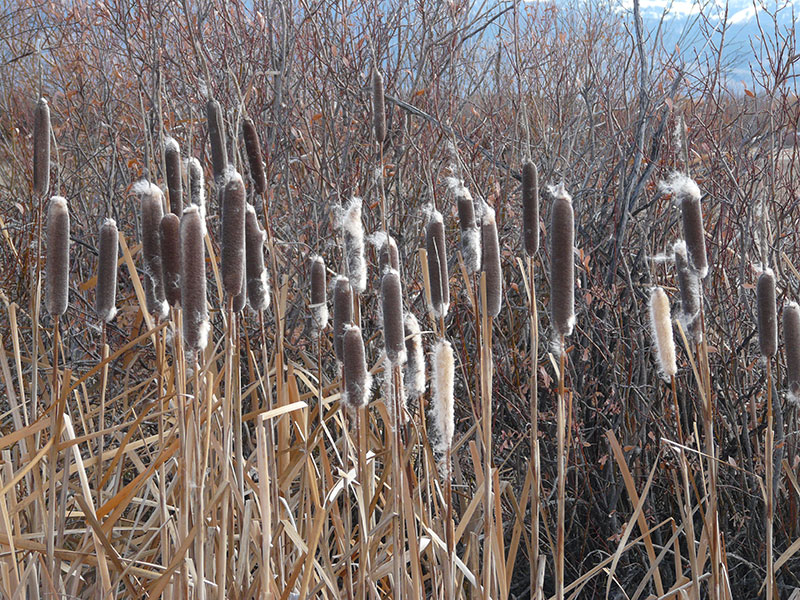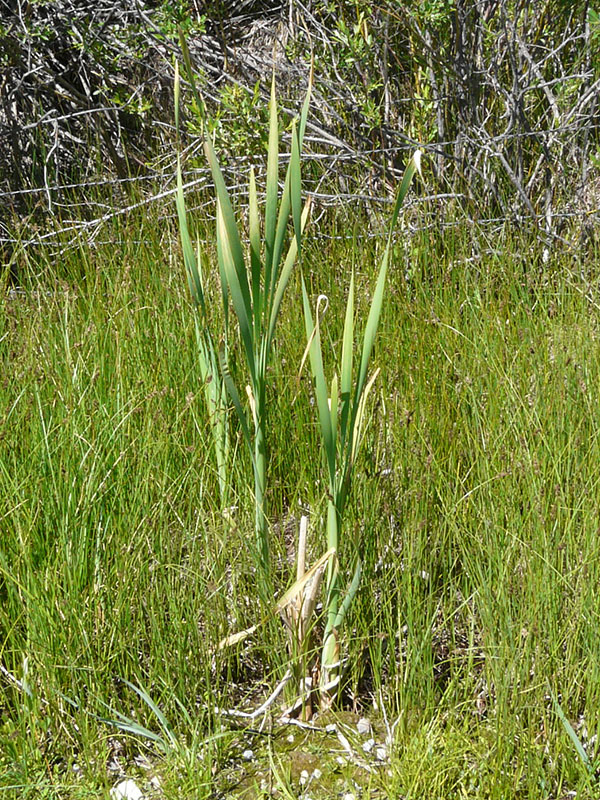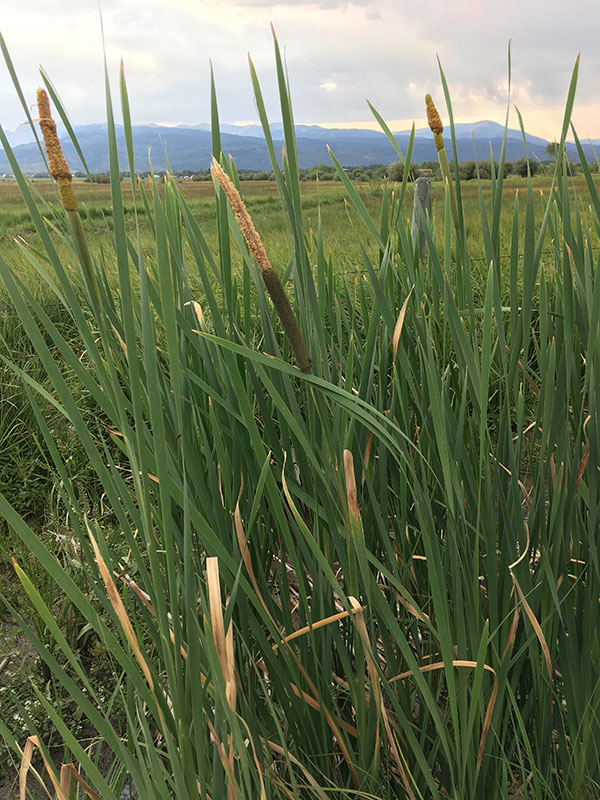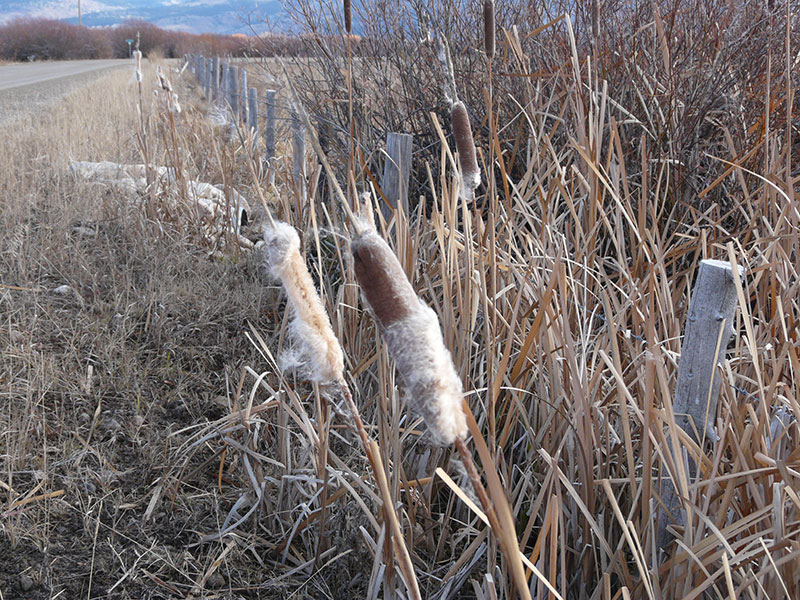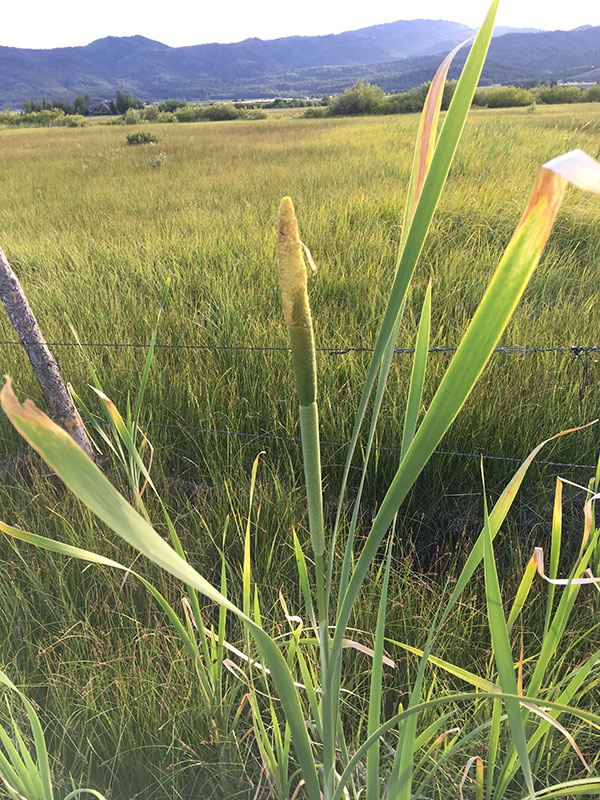Typha latifolia / cattail
- tall, grass-like with thick, long, flat leaves
- in wet areas, especially streams and stream banks
- inflorescence club-like spike; yellow (male) above, green (female) below
- seed head dark brown club, with bare spike above
- fruits (seeds) white & fluffy, released in late summer, autumn, winter
Also known as: broadleaf cattail
Cattail is a species with a worldwide distribution, including all states in the US and provinces in Canada. It is not the only species in the genus, but is the most common in most areas. It is probably the only species in the Valley.
Broadleaf cattail is typical of open-canopy, early successional (recently disturbed) communities, especially in moist or wet habitats. Its annual life cycle (i.e. regrowth, reproduction and late season decay) is greatly sped up by eutrophication of waterways, to the point that it can completely fill in ponds with high nutrient levels. In the Valley, this is one reason why it is so common in the drainage ditches and streams affected by cattle grazing.
Cattail plants are normally 3 to 10 feet tall. Although the stems are stout and round, the most visible parts are the leaves which are long, thick, linear and flat. The flowering stems are typically as tall as or taller than the leaves, a characteristic that distinguishes T. latifolia from other species, particularly T. angustifolia or narrow leaf cattail (which may or may not occur in Idaho).
Although pretty much everyone has seen a cattail inflorescence, it is also possible that they haven’t recognized it as such. The flowers are teeny, “felty” and quite numerous (like 100,000 or more) on a terminal spike that may be as much as 2″ across and 6 times as long. The female flowers are little more than a single pistil. The male flowers are limited to the upper half of the spike, with female flowers below. Again as a distinguishing feature from T. angustifolia, the male and female spikes are almost always touching (but may be separated by a space of one-half to 1.5″).
After pollen release, the male flowers die away and the females persist, each to produce – if pollinated – a single fruit with long slender hairs at the base. Seed dispersal is by wind or water transport, or by mud being carried by people or animals, but in general the seeds are not all released at once. I say “in general” because as a child I always found it fun to cut off a cattail stem and whack the seed head against a post or fence and watch it explode. That pretty much releases all the seeds at once.
Cattail seeds are certainly capable of spreading the population. A single plant grown from seed may produce more than 100 shoots in a single season, with another 100 lateral buds to take over the next year. Once established, however, local spreading is by rhizomes, each of which can be more than 2 feet long. The higher the nutrient availability, the faster and farther the spread. For much more on the ecology and biology of this species, check out the Forest Service Fire Ecology site.
Cattail has been called “the pantry of the outdoors” as virtually all parts of the plant can be eaten directly. The pollen can also be used to make flour as can ground rhizomes. Leaves can be used to make mats and the downy fruits as burn dressings or “talcum powder” or insulation. And as any kid knows who has been to camp, the down is also great tinder for building fires.
| Color | |
|---|---|
| Family | |
| Blossom size | |
| Inflorescence size | |
| Inflorescence type | |
| When? | |
| Where? | moist meadows, riparian, stream banks, wet(ter) meadows, wetlands |
